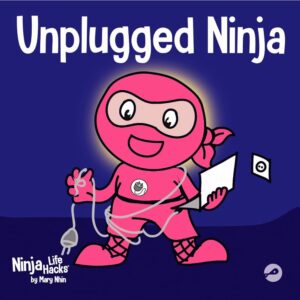The ideal grade that I would like to teach is Kindergarten! Brave… I know. Since Kindergartens are so young (typically ages 4-5), people may assume that they don’t need to know about being safe when using technology. Although some children this age might not be using technology, there is also a large group who are. These days, even 4 and 5 year old children can have access to an iPad, video game system, and potentially even their own phone. While kids at this age most likely aren’t on snapchat, they are still using apps, games, and other software where they may be coming into contact with others. I would argue that there is definitely a need for kids to learn about digital literacy and safety in Kindergarten.

Where does this fit in the curriculum?
The Saskatchewan Kindergarten health curriculum has a personal safety outcome that could definitely be used to talk about cyber safety:
- USCK.2 Establish behaviors that support safety of self and others (including safety at school and at home)
Indicators:
| (a) | Develop the language with which to wonder and talk about safety. |
| (b) | Recognize “safe” and “unsafe” behaviours and situations (e.g., taking turns, wearing weather-appropriate clothing, playing in designated areas, walking alone). |
| (c) | Investigate safety guidelines and rules to keep one safe at school and at home. |
| (d) | Learn and practise safety procedures in a variety of school and home contexts. |
| (e) | Identify challenges that may exist to being safe at school and at home (e.g., limited supervision). |
| (f) | Describe what children can do to support the safety of self and others. |
| (g) | Examine what to do if the safety of self or others may be/is jeopardized (e.g., tell a trusted adult, leave, plan ahead). |
| (h) | Participate in a variety of activities that provide opportunities to develop the confidence to support the safety of self and others (e.g., fire drill, wearing a seatbelt, knowing how to lock/unlock a door). |
While this outcome states that they need to learn about safety in general, I think that cyber safety could easily fit into a unit about the different types of safety.
Teaching Kindergartens about this topic will be quite difficult because you can’t just send them off to explore things online on their own and make their own decisions about what is real and fake. Most of the resources listed in the weekly plans are more for older grades and wouldn’t be a good fit for Kindergartens due to the use of big words and independent format.
These are the following strategies I would use:
1)If I were teaching digital safety to Kindergartens, I would start really simple by talking about what it means to be safe when using technology. I would show them examples of fake news/fake profiles online and talk about how we know it is fake and what fake things online look like. According to the article I read about teaching students to identify fake news, bringing real world examples into the classroom is one strategy that could be used.
2) According to the Smell Test article I read, students as young as Pre-K can be learning about digital literacy using stories. I would follow the advice in this article by selecting stories that talk about being safe online and have discussions with my class about what that means. For example, stories such as “Unplugged Ninja” by Mary Nhin can be used to teach young learners about balance and creating healthy digital habits.

3) I would also utilize comics such as “You’re not going to believe what I have to tell you” that was listed in the weekly plans. By showing students visuals, they are able to understand high concept topics a bit easier. Teaching them to recognize things that aren’t true from things that are true is a critical skill to learn at a young age that will contribute to their digital awareness as they get older.
I love how you said that many 4-5 year old’s use technology these days. As much as we don’t like it, they have the access to it and it is our responsibility to teach them how to navigate it safely.
I think that teaching kids young about online safety is very important, a lot of kids have access to the internet.
This is a great discussion, Kerina! It’s so important to introduce digital literacy and safety early, especially since young kids are increasingly exposed to technology. Your approach—using stories, comics, and real-world examples—makes these complex topics accessible and engaging for Kindergarteners. Integrating cyber safety into Saskatchewan’s health curriculum is a smart idea, and “Unplugged Ninja” sounds like a fantastic resource. Teaching kids to recognize what’s real and fake online from an early age will set them up for a safer digital future. Keep up the great work!
It’s so true that kids this young already have access to digital media. When I was in a grade 1/2 class a while ago, most of the kids were watching YouTube daily. Another thing I noticed is how they use online video games to socialize. While some may think they’re too young to learn the concepts of digital literacy, I think it’s never too early to start teaching them. I found these lesson plans for teaching the Digital Media Literacy Framework for grades K-3 if you wanted to check it out! https://mediasmarts.ca/teacher-resources/digital-media-literacy-framework/digital-media-literacy-framework-grades-k-3